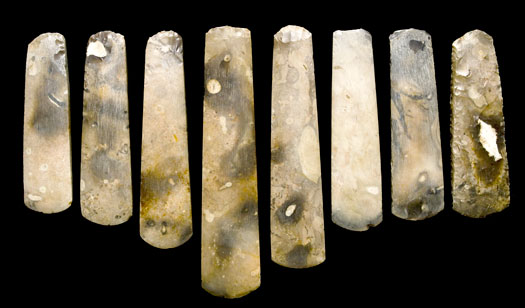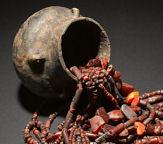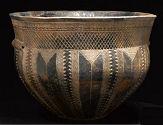
The Neolithic period
The Neolithic period covers the era 3900-1700 BC. The hunting people in Denmark had long had contact with the farming societies in central Europe, but only around 3900 BC the hunters began to till the land and keep animals. Wooded areas were cleared, burnt and replaced with fields of arable crops. Cattle, pigs and sheep appeared as domesticated animals. The big change was that people could produce their own food products. Coastal fishing was still good and therefore the farming population continued for a long time to hunt and fish from the old settlements on the coast.
The farmers’ grave monuments in the form of dolmens and passage graves were constructed all over Denmark. They can be seen still in many places in the Danish landscape. Here you can see the splendid polished flint axes and large collections of amber beads which were offered to the gods in hope of a good harvest. You can also see how the Skarpsalling Pot – Denmark’s most attractive pottery vessel from the Neolithic period – is decorated. Or you can learn more about how daggers, such the one from Hindsgavl, and other flint tools were produced.

The amber was shaped into beads or other jewellery, which could be hung around the neck or sewn upon clothes. Neolithic amber

One of the best known examples of Neolithic pottery is the vessel that was found at a burial mound near Skarpsalling in Himmerland. The Skarpsalling Pot
